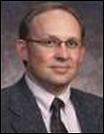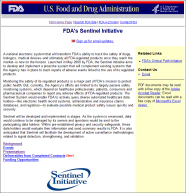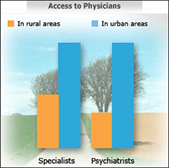News 5/14/09
From Dr. Lyle: “Re: Meaningfuluse.org. I am assume you saw this. There may not be two more important words in the English language right now. How they are defined will affect if/how EMRs are fully adopted and whether they are used in a way that truly makes a difference… In other words, the very fate of our healthcare system may rely on how this is defined in the weeks and months ahead.” Dr.Lyle is referring to the recent announcement from Compuware and the Association of Medical Directors of Information Systems about their new www.meaningfuluse.org website. They claim it provides HIT with a “single, central location” to discuss the definition of meaningful use. Dr.Lyle is correct: this definition is everything, which is why we are seeing a flood of opinions from vendors, professional associations, and other stakeholders. We’re weary of all the posturing and are ready to hear the definition.
The University of Minnesota Physicians (UMP) group selects MedAptus’ Practice Plus Edition for charge capture automation. UMP expects to complete the MedAptus rollout to its 700 physicians by the end of the year.
At a recent Digital Healthcare Conference, Marshfield Clinic (WI) CIO and physician Robert Carlson indicated that after three years on EMR, his clinic is moving its focus beyond the input of clinical information and more to the use of data to better manage patient health and outcomes. Administrators are also trying to make sure the use of technology does not hinder their doctors’ abilities to be doctors, especially after receiving a patient e-mail telling one doctor, “You make a better data clerk than a doctor.”
It’s one of a practice’s biggest fears: what if the computer goes down while patients are still being seen? At Mashburn Medical Center, a computer virus forces administrators to close its four community health centers earlier than usual Tuesday to give IT staff time to resolve a spyware problem. IT staffers at the North Carolina facility were installing a new computerized pharmacy system when the computer began crashing, affecting data for the health centers. Rather than risk damage to patient information, the system was shut down. Fortunately it was back up in time for patients the next day and officials are confident no patient data was compromised.
EMR vendor Nightingale announces its position as Canada’s most widely accepted Web-based EMR, serving over 200 healthcare providers. The company also has a number of US clients using its PM and EMR solutions.
Will this model catch on with physicians? Startup company Physician Capital Group (PCG) allows doctors to input billing information via a Blackberry or iPhone immediately after seeing a patient. The data is downloaded to PCG’s computers, which automatically determine the doctor’s compensation from the insurance company. Within hours, PCG mails the doctor a check for that amount, less its 12% commission. PCG deals with all the insurance collection issues. Assuming the average billing service charges 6% of collections, will doctors find that getting paid a bit faster is worth another 6%, especially when the providers are essentially entering the charges themselves? And how much faster is it to get a check mailed to you the same day/next day versus receiving electronic remittance directly to your bank account?
Internet-based EMR/PMS provider Waiting Room Solutions announces that Genesis Health Clinic (IA) is installing its solution. Can’t say we know much about this company, though its site indicates it is 2006 CCHIT certified and its hosted solution runs $600 per month per physician, plus set-up.
In this age of HIPAA, paper shredders, and privacy advocates, how exactly does this happen? Dozens of boxes with thousands of patients’ personal information and medical histories are found in a recycling bin outside of a Goodwill store in Texas. Police men resorted to dumpster diving to retrieve the records.
What should come first: EHR or interoperability? In an article published in the Atlanta Journal-Constitution, the IT manager for a major global distribution network argues that EHR is the wrong prescription for healthcare automation.The better approach is to develop seamless connections or interchanges that enable patient data exchange. Much like a travel agent or travel site can “talk” to various airlines, rental car companies, and hotels to create a single travel record, an interchange would allow connection between disparate systems and even create a patient record as a bi-product. Which raises the next question: who pays for it?









The article about Pediatric Associates in CA has a nugget with a potentially outsized impact: the implication that VFC vaccines…